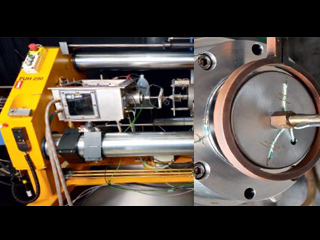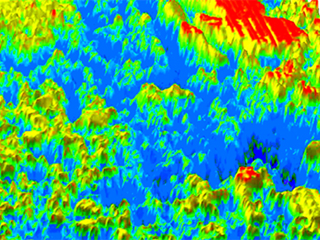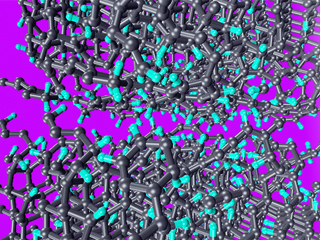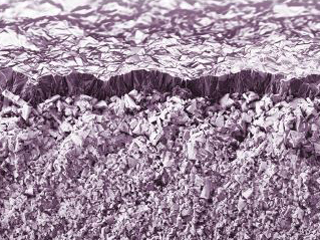About 80 employees from engineering and natural sciences work on tribological issues in Karlsruhe and Freiburg. They pursue a holistic approach to the examination and optimization of tribological systems, consisting of model experiments, high-resolution analysis, and the multi-scale simulation needed to discover the elementary mechanisms.
Why MicroTribology Center μTC?

Tailored model experiments
We depict complex tribological systems of our customers in simplified but relevant model systems,
wear rates are continuously measured at high resolution,
application-related tribological tests are carried out on materials and components,
we investigate the tribochemical influences on friction and wear and combine electrochemical methods with tribological model and bench tests,
in situ wear measurements for the detection of the smallest wear rates and their accompanying changes are carried out directly and in single experiments under variable test conditions.

High-resolution triboanalytics
We spatially and temporally describe the chemical composition, microstructure and topography of tribo-systems,
through chemical characterization we record the elemental composition of the surface and the near-surface volume (if possible with atomic resolution) and the chemical bonding conditions in the underlying tribo-material,
through microstructural characterization we generate detailed texture information and distinguish amorphous from crystalline regions,
for spatial characterization we combine structural and chemical information with high-resolution topographic Information.

Multiscale tribo-simulation
The chemical, microstructural, and topographical complexity of experimental tribo-systems are represented in virtual models,
we use the numerical simulation as a virtual microscope, model the sub-microstructure with molecular dynamics and represent the chemical complexity with ab initio methods,
through mesoscale treatment of the elasto-hydrodynamics of tribo-systems we make suggestions for topographies and the rheological properties of lubricants.

Surface design and coating
We provide instructions on how to adjust the nanostructure of layers and on which lubricant additives have a positive effect on friction and wear,
for ceramic materials under media lubrication and environmental influences we develop concepts to model damage development through wear, corrosion, and aging,
by incorporating network-modifying elements into the plasma coating we adjust the wettability with lubricants and avoid unwanted build-up,
supported by plasma diagnostics, our process technology allows separate control of layer-inherent and topographic properties.
Combination experiment – analytics – simulation
We exploit the potential that lies in the combination of experiment, analysis, and simulation by identifying realistic model experiments with as little chemical complexity as possible, thus enabling a comparison with atomistic simulations.
Since the processes in the lubrication gap of many systems are not directly observable experimentally, we work on being able to make predictions on “dirty” experiments with atomistic simulation.
We generate synergies from the coupling of analytics and numerical simulation with as precise as possible analytical starting structures and the simulation-based interpretation of spectra in order to be able to draw conclusions about chemical bonding relationships from chemical spectral fingerprints.
Technical equipment and Possibilities at a glance
Tribological experiments
Pin-on-disc test rigs
Microtribometer
Rolling and sliding wear test rigs
Tribo-corrosion test rigs
Fretting test rigs
Motor test rigs
Tribo-analytics
X-ray photoelectron spectroscopy (XPS)
Microscopy (AFM, REM, TEM, FIB)
Spectroscopy (Raman, ICP-OES, FTIR)
Radio nuclide technology
Tribo-simulation
Continuum models (FEM, CFD)
Mesoscopic particle simulation
Molecular dynamics
Tight-binding
Density functional theory
Self-created codes (GPAW, Atomistica, SimPartix®)
Surface design and coating
Reactive magnetron sputtering (HF, DC, pulse DC) with HF substrate biasing
Ion radiation techniques
PECVD systems
Plasma CVD coating systems CCP/ICP
Multi-chamber coating for multiple-layer and hybrid coatings
 MicroTribology Centrum μTC
MicroTribology Centrum μTC